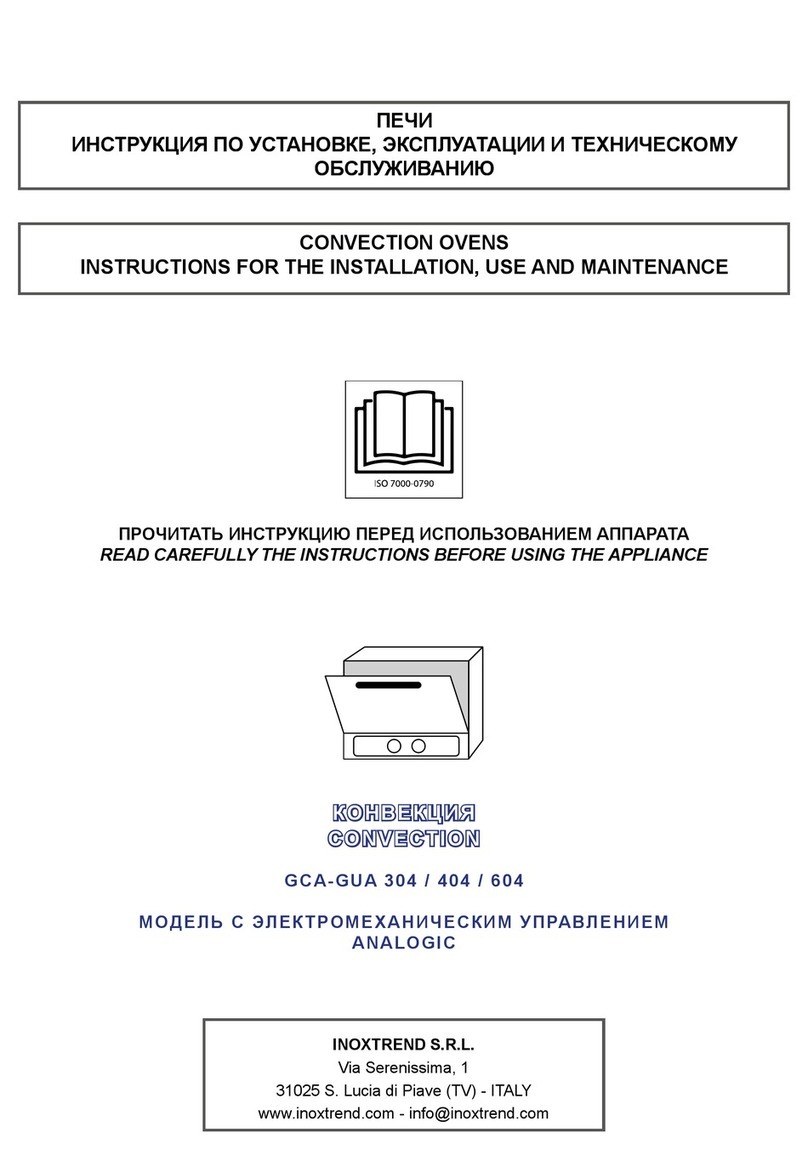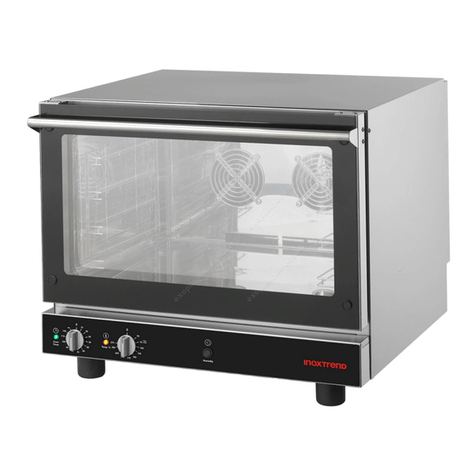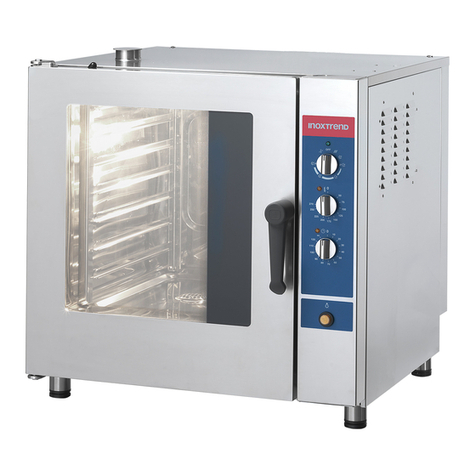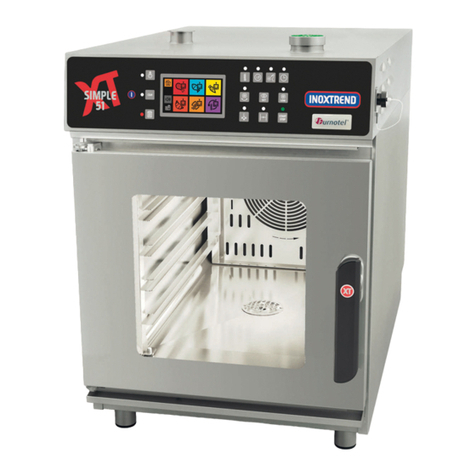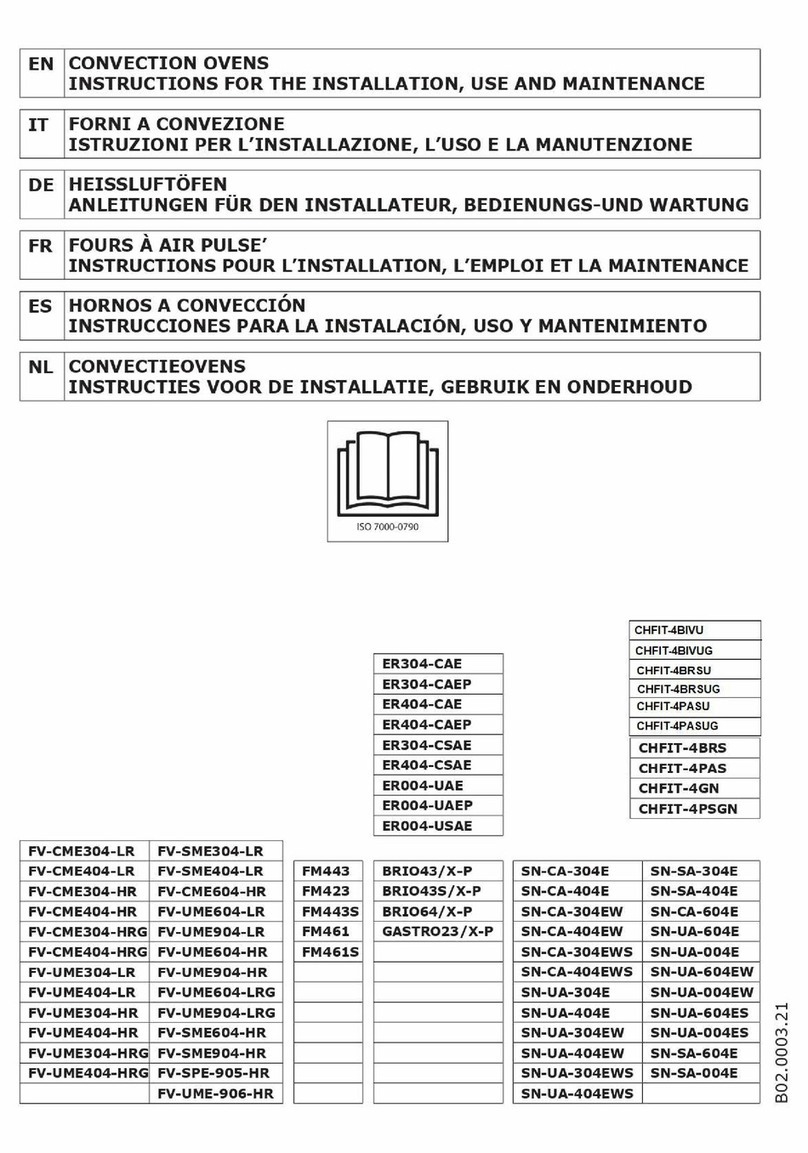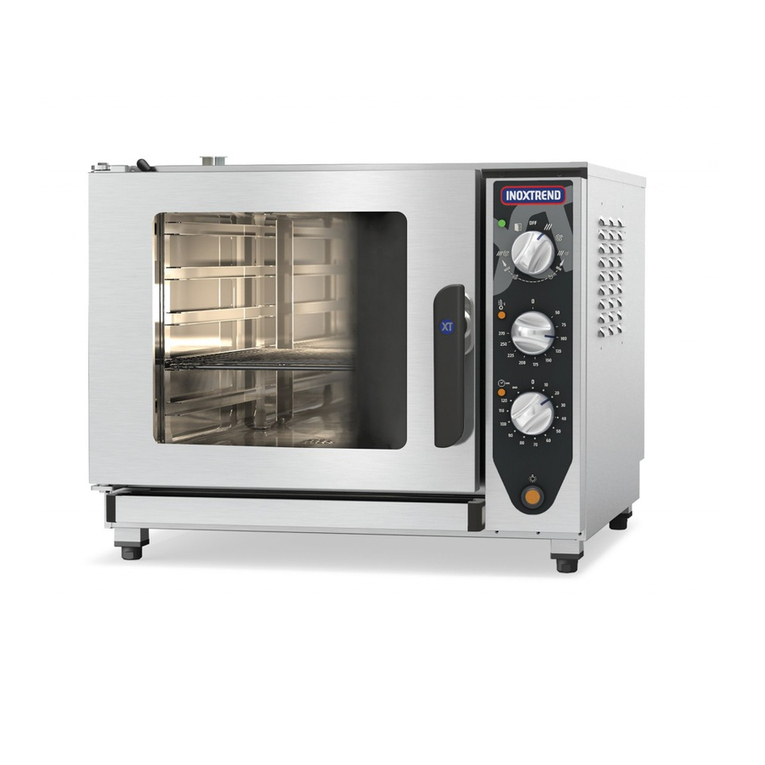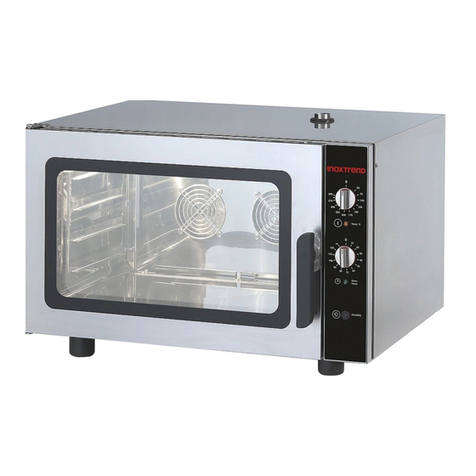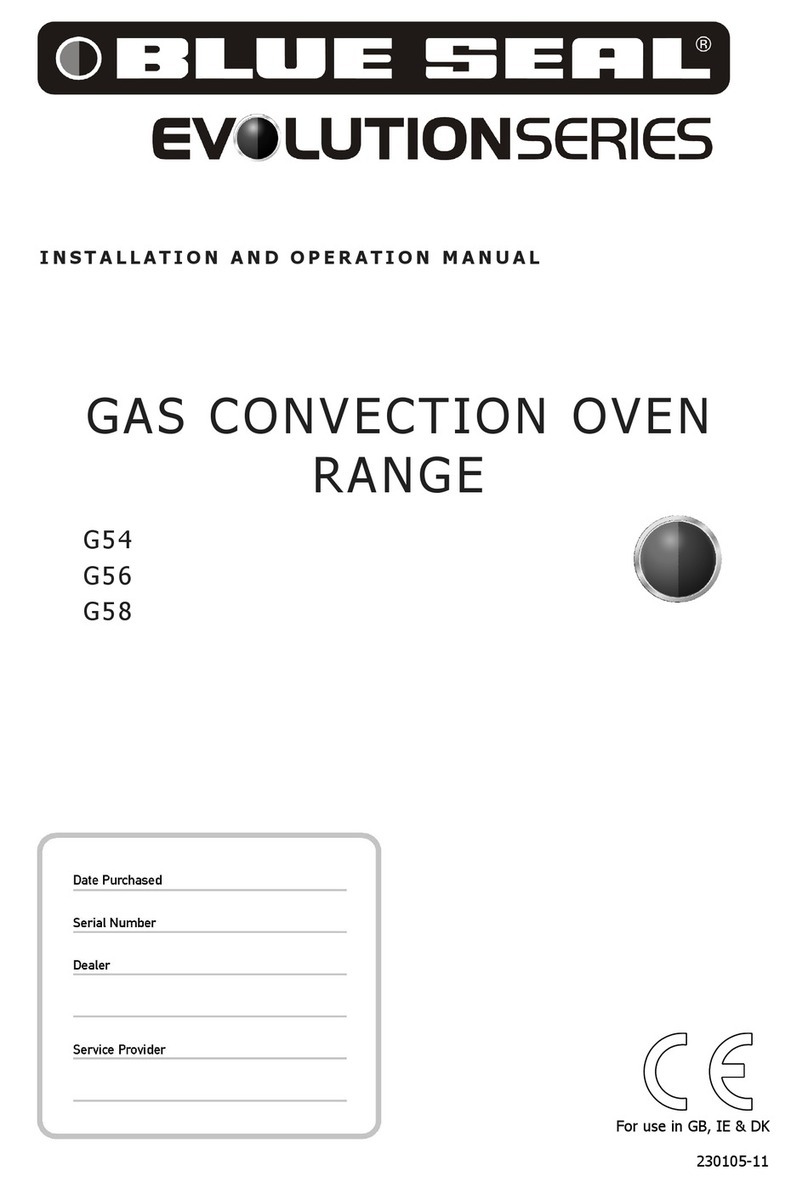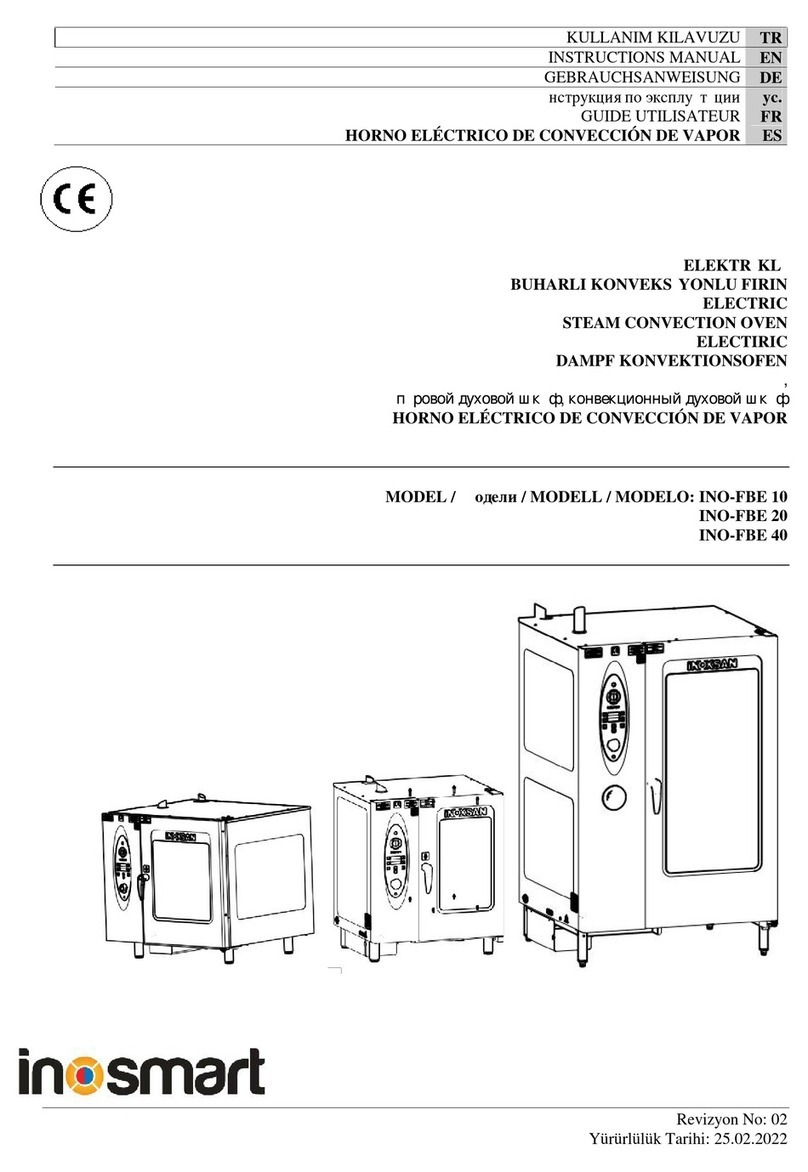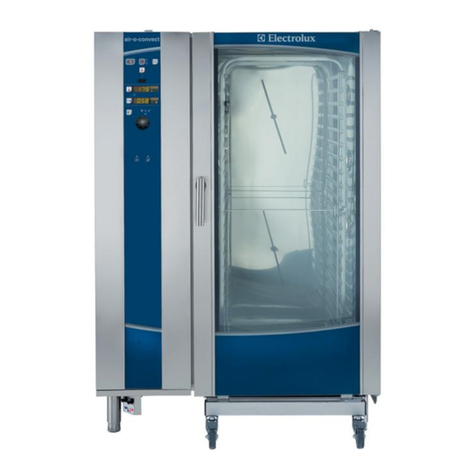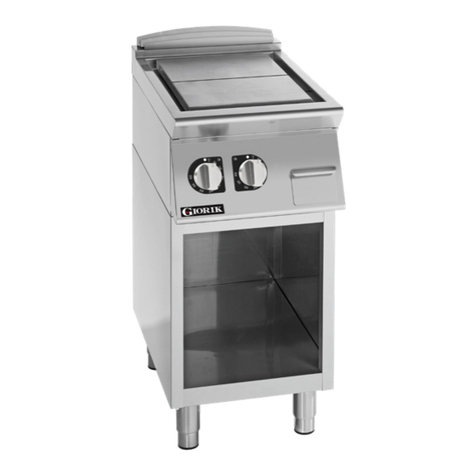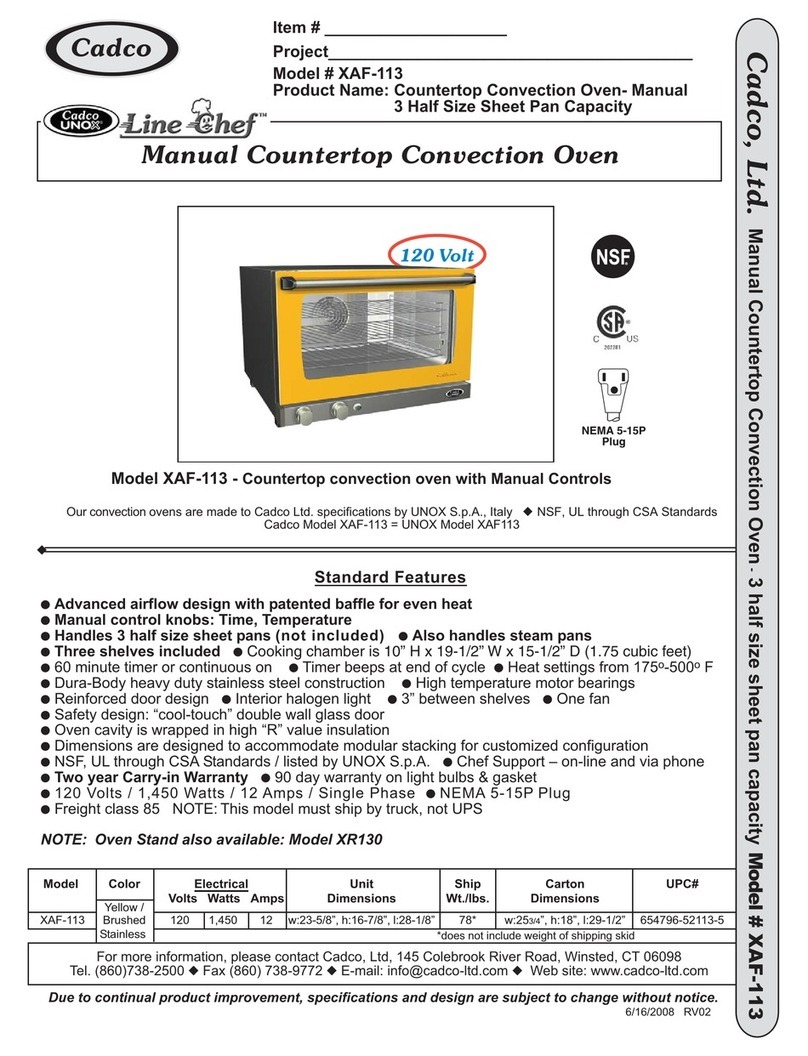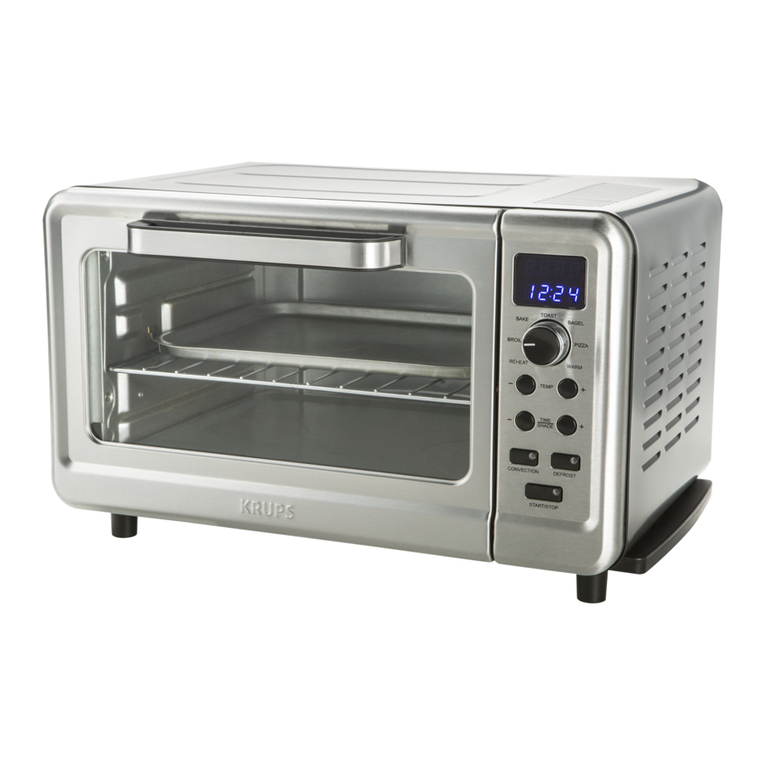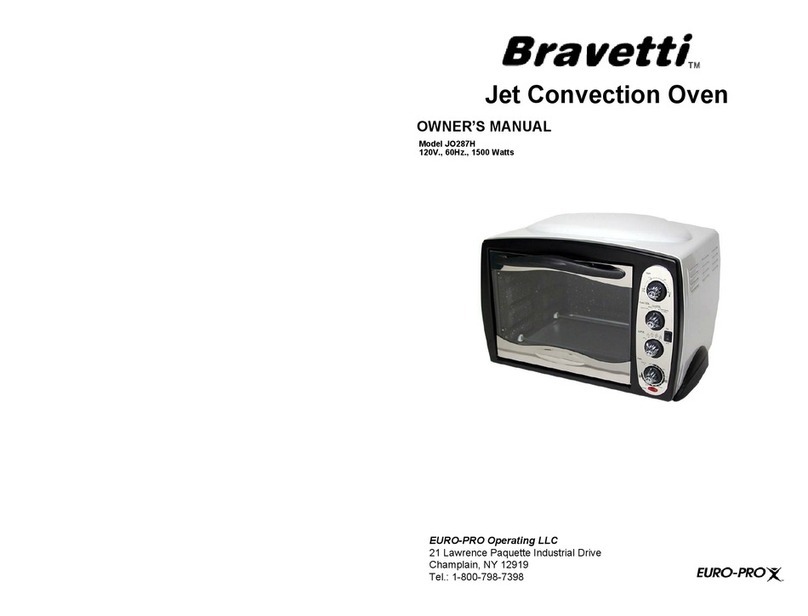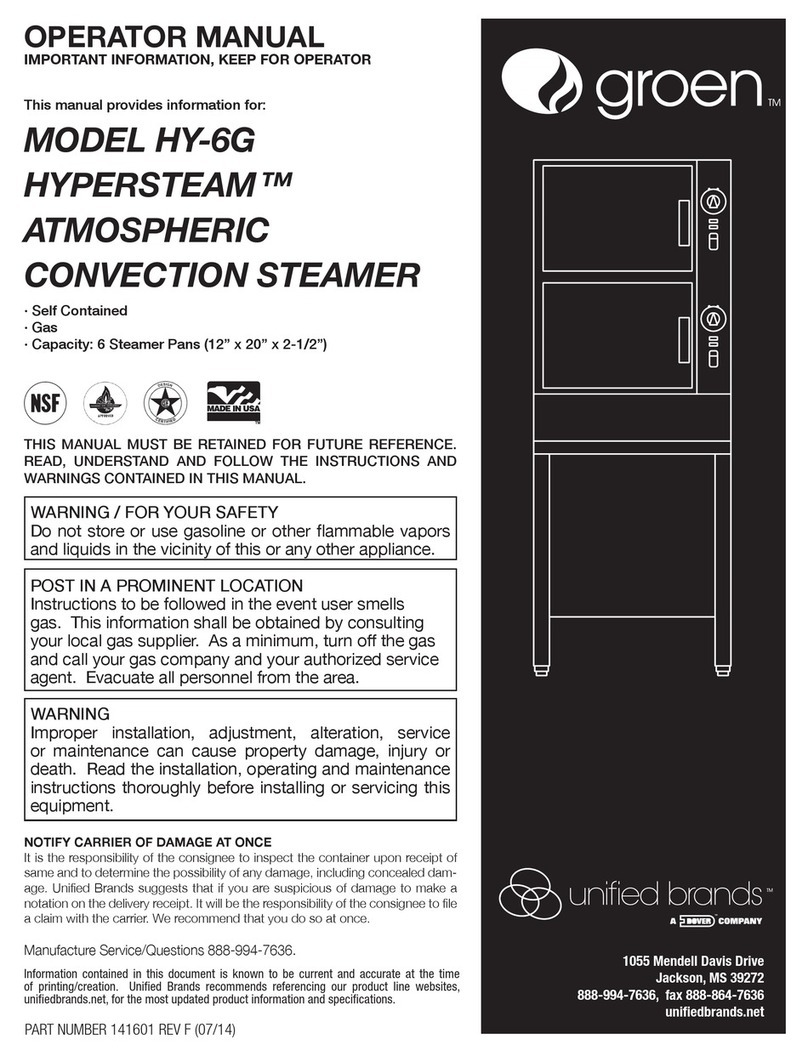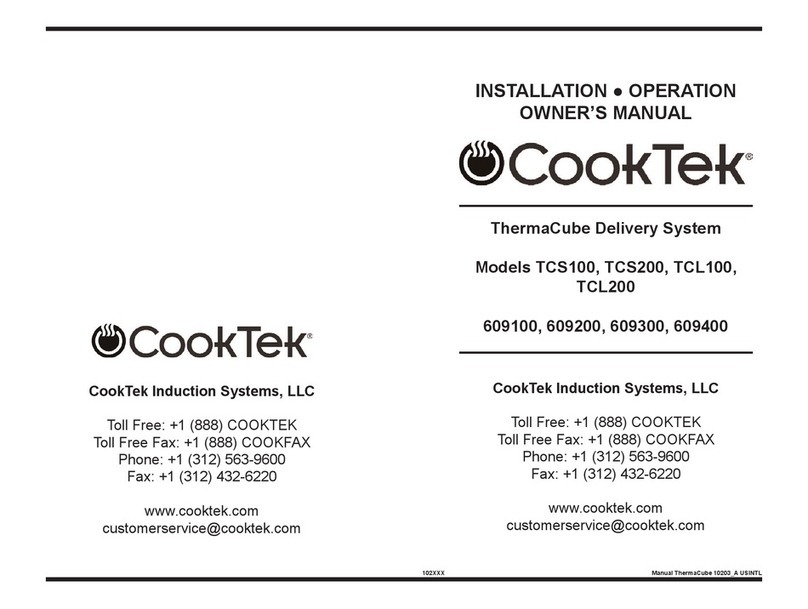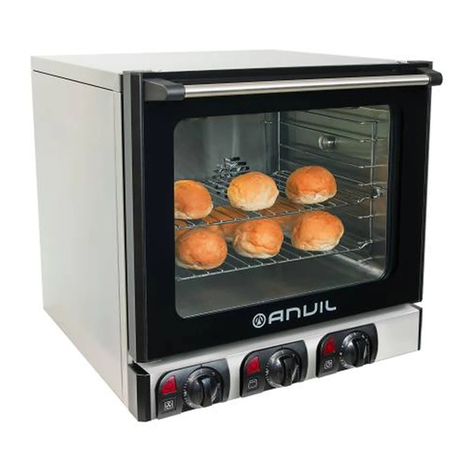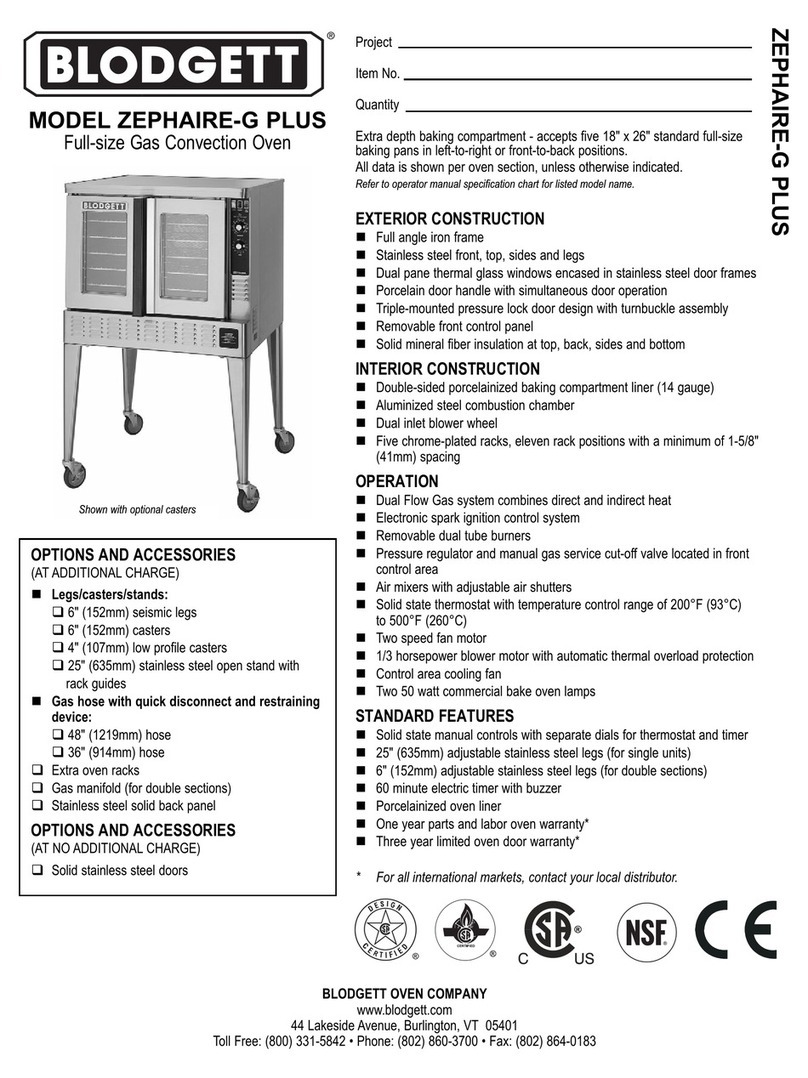
17
VORWORT
Der Inhalt dieses Handbuchs ist allgemeingültig und nicht alle beschriebenen funktionen könnten in
ihrem Produkt eingeschlossen sein.
Die Herstellerrma übernimmt keinerlei Verantwortung für eventuell in dieser Broschüre enthaltene Ungenauig-
keiten, die auf Druckfehler zurückzuführen sind und behält sich das Recht vor an ihren Produkten alle für notwen-
dig erachteten Änderungen anzubringen, ohne die wesentlichen Eigenschaften zu beeinussen.
Lesen Sie sorgfältig diese Bedienungsanleitung und beachten Sie insbesondere die gültigen Richtlinien bezüglich
der Sicherheitsvorrichtungen. Das Gerät darf nur für den ursprünglich vorgesehenen Zweck, d. h. zum Regene-
rieren von vorgekochten Speisen und Warmzuhalten verwendet werden.
WARNUNG! Bevor Sie irgendeine Art von Verbindung dieser Geräte (elektrische oder hydraulische), lesen Sie
bitte die Anweisungen in diesem Handbuch.
Dieses Handbuch soll mit Sorgfalt zu Referenzzwecken zur Verfügung von Benutzern oder Wartungstechnikern
aufbewahrt werden. Die Installation darf ausschließlich von qualiziertem Fachpersonal durchgeführt werden.
1.0 KONFORMITÄTSERKLÄRUNG
Der Hersteller bestätigt, dass die Geräte den EU-Vorschriften entsprechen. Die Installation muss, insbesondere
bezüglich der Belüftung der Räume und der Abgasleitung, gemäß den gültigen Normen durchgeführt werden.
Achtung: Der Hersteller haftet nicht für direkte Schäden, die durch unsachgemäße Bedienung, falsche
Installation, oder mangelnde Wartung verursacht worden sind.
1.1 EUROPÄISCHE RICHTLINIE 2012/19/UE
In Übereinstimmung mit den Anforderungen der Europäischen Richtlinie 2012/19/UE über Elektro- und Elektro-
nik-Altgeräte (WEEE) ist vorliegendes Gerät mit einer Markierung versehen. Sie leisten einen positiven Beitrag für
den Schutz der Umwelt und die Gesundheit des Menschen, wenn Sie dieses Gerät einer gesonderten Abfallsamm-
lung zuführen
Im unsortierten Siedlungsmüll könnte ein solches Gerät durch unsachgemäße Entsorgung ne-
gative Konsequenzen nach sich ziehen. Auf dem Produkt oder der beiliegenden Produktdoku-
mentation ist folgendes Symbol einer durchgestrichenen Abfalltonne abgebildet. Es weist darauf
hin, dass eine Entsorgung im normalen Haushaltsabfall nicht zulässig ist Entsorgen Sie dieses
Produkt im Recyclinghof mit einer getrennten Sammlung für Elektro- und Elektronikgeräte.
Die Entsorgung muss gemäß den örtlichen Bestimmungen zur Abfallbeseitigung erfolgen.
Bitte wenden Sie sich an die zuständigen Behörden Ihrer.
1.3 TRANSPORT DES OFENS UND ENTFERNUNG DER VERPACKUNG
Beim Eingang des Ofens und vor der Installation, überprüfen, daß die Verpackung intakt ist und es keine sicht-
liche Schäden gibt.
Überprüfen Sie, daß es zusammen mit dem Ofen die dazugehörigen Dokumentation gibt und zwar:
• Installation.Gebrauch-und Wartungsanleitungen
• Formular für die Überprüfung der korrekten Installation
• Schaltplan
• Etikette ISO 3864-1
Vor dem Transport des Ofens bis zu dem Punkt, wo er installiert werden muss, überprüfen Sie daß:
• Die Türen sind groß genug um den Durchgang des Ofens zu gewähren;
• Der Bodenbelag das Gewicht tragen kann.
Je nach dem Modell des Ofens, seinen Abmessungen und seinem Gewicht, geeignete Einrichtungen verwenden,
um die Ware während Transport und Installation zu bewegen, um die Stabilität zu gewähren und Fälle, Umkippen
oder unkontrollierte Bewegung des Gerätes und seine Teile zu vermeiden.
Die Verpackung des Ofens halten, bis der Ofen installiert wird.
Die Verpackung macht die Bewegung der Ware einfacher und schützt den Ofen vor zufälligen Stößen.
Während des Umzugs und der Installation des Ofens, muss der Installateur die Unfallverhütungsvorschriften in
Kraft am Ort der Installation respektieren (Verwendung von Sicherheitsschuhe, Handschuhe usw.).
Die Verpackung entfernen, ohne den Ofen zu schaden. Die Klebefolie, die die Edelstahloberäche schützt kann
entfernt werden, auch nach der Platzierung des Ofens über das entsprechende Untergestell oder auf der Auage-
äche.
ACHTUNG: Die Materialen der Verpackung und die Klebefolie sind potenziell gefährlich.
Aus diesem Grund sollen sie außerhalb der Reichweite der Kinder und richtig gehalten werden,
in Übereinstimmung der lokalen Bestimmungen.
Sie sollten die Verpackungsmaterialen (Holz, Pappe, Plastik...) trennen und entsorgen Sie diese
separat, in Übereinstimmung der gültigen Vorschriften am Ort der Installation.
Achtung: Vor Inbetriebnahme des Geräts die Schutzfolie von den Stahlteilen abziehen. Dafür dürfen keine Scheu-
ermittel bzw. Metallgegenstände verwendet werden.
Klebrige Rückstände mit einem in Lösungsmittel getränkten Schwamm entfernen.
Wenn der Ofen in Betrieb gesetzt wird, ohne die Klebfolie wegzunehmen, wird die Entfernung der Klebfolie und
die Reinigung der klebrigen Rückstände immer schwieriger.
DE




















